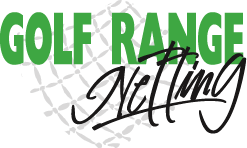Netting is used in different manners today than it was even just a decade ago. With the advancement of technology, netting has found yet a new purpose: drones. These small, unmanned aerial vehicles (UAV) are becoming more and more popular. They provide an exciting way for people to take breathtaking pictures and videos from above. Occasions like concerts, music festivals, sports games and beach parties are events that might warrant the use of a drone. Many colleges are even offering special courses to teach people how to safely operate them. Some professions now rely on drones to assist with work. Power companies use them to check power lines, so their workers can remain safely on the ground. With all these new drone pilots out there, they need a place to train. Installing drone netting provides a safe practice space for pilots of all levels.
Training
Learning how to fly is the first step of drone use. People often make the mistake of jumping right in without practice, which doesn’t always end well. Drones aren’t cheap, so if you crash one you could do hundreds or thousands of dollars in damage. Let’s not forget the surrounding people and property that can be affected as well. Installing a netted enclosure will keep all drones contained and away from anything else, so if one crashes it’s not a safety hazard. It will also encourage brand new pilots to focus on perfecting their skills and less on any risks involved.
Safety
Drones can be notoriously disobedient. Sometimes they just don’t fly how you want them to, especially in certain weather conditions. Netting adds an extra layer of protection between you and the drone you’re flying while you get comfortable with its operations. Also, drone racing and other similar competitions are taking off. During these competitions, there are usually multiple drones flying at high speeds. Introduce spectators into this environment and the injury potential goes way up. To keep both pilots and spectators safe, structures like flight cages can be constructed. A flight cage can surround the entire spectator area to prevent drones from entering that space. In general, drone netting always keeps pilots and instructors safe no matter the setting. After all, there’s no investment too great to ensure someone’s safety.
Vehicle Recovery
Without a barrier net, drones are free to fly wherever. For an inexperienced pilot, this is not a good thing. As expensive as drones are, the last think you want is one to get out of control and crash somewhere beyond your visibility. The number of drones that go down in bodies of water and heavily wooded areas is astounding. In those instances, the pilots usually never see their drones again. Flying a drone within a netted area ensures that it won’t escape beyond your reach. For pilots in training, this is a huge confidence booster. Crashing a drone can be embarrassing enough without the financial burden of replacing one that’s lost forever.
Frankly, flying a drone isn’t always simple. Like everything, the more practice you have the better you will get. Therefore, drone netting is so beneficial for everyone looking to operate one of these devices. It can help train new pilots in a safe environment, it adds a safety barrier between drones and people and it keeps drones in one area to eliminate the risk of losing one out in the wild. If you’re an instructor, a business or even a recreational drone pilot, installing a netting structure is always a smart choice.
